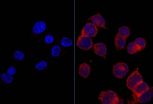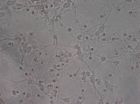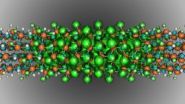(Press-News.org) Despite climate change, most polluters still pay little or nothing when they release carbon dioxide into the atmosphere.
'A cost USD 0.15 per kilo CO2 would be enough to solve the whole climate change problem,' says Thomas Sterner, professor of environmental economics at the University of Gothenburg. Sterner is the only Swedish researcher to serve as a coordinating lead author of a new report that the Intergovernmental Panel on Climate Change will present next week.
The third part of Intergovernmental Panel on Climate Change's fifth assessment report, Working Group III on the technical and socio-economic aspects of climate change concerns measures to reduce or eliminate emissions of greenhouse gases. The report covers the most important economic sectors – energy, transport, construction, industry, agriculture, forestry and waste management.
Compared with the last assessment in 2007, many countries now have ministries in charge of climate issues. Numerous measures to combat climate change have also been introduced, many of which the authors of the report have been able to evaluate. The scientists' summary for politicians will be finalised and presented in Berlin next week.
'We have explored the new policy instruments introduced around the World. Some of my colleagues have felt very enthusiastic – rather like botanists discovering new species. I am not equally optimistic because most of the new instruments are too weak to be meaningful. What we need to avoid dangerous climate change is the application of strong policy instruments,' says Sterner.
One potentially strong measure policy instrument according to the report is to make emitters of CO2 pay a price in relation to the amount emitted – but it all hinges on this price being sufficiently high. In most countries, there is virtually no cost to emitting CO2 and other greenhouse gases. At the same time, studies from for example the International Energy Agency show that if a sufficiently high emission tax of SEK 1 (about USD 0.15) per kilo CO2 (or an equivalent permit trading scheme) were introduced in all sectors across the world, the total emissions could be reduced by half by 2050. The difficulty, however, lies in establishing sufficiently strong international agreements.
Another effective intervention identified in the report is to stimulate research on new technologies. One dilemma, says Sterner, is that companies know they will have problems patenting new environmentally friendly technologies. This realisation of course affects their motivation negatively, implying that they will not do enough research and therefore there is a need also for state-funded research.
Today, CO2 taxes are relatively unusual being limited mainly to a few countries in northern Europe. Sectoral taxes – on transport fuels are more common and have been shown to have very significant effects. On the other hand, many countries are in fact still subsidising fossil fuels. Sterner says that one important policy instrument would be to remove these subsidies. The measures discussed in the report also include voluntary agreements.
'I really don't believe in voluntary measures since they imply letting business and industry do as they please. Overall, I feel that our report may come across as too modest compared with the report from Working Group I, which was presented last autumn and described the climate situation in the world as catastrophic. But there are indeed real opportunities to limit the emissions,' says Sterner.
INFORMATION:
Contact:
Thomas Sterner, professor of Environmental Economics, School of Business, Economics and Law, University of Gothenburg. Coordinating Lead Author of the IPCC Working Group III Report, the chapter on national, regional and local policy instruments. Tel: +46 (0)708 163 306; e-mail: thomas.sterner@economics.gu.se
Karin Backteman, Communications/Press Officer, +46 (0)31 786 25 95, karin.backteman@economics.gu.se
The IPCC Fifth Assessment Report (WGIII AR5)
On 13 April, the UN climate panel Intergovernmental Panel on Climate Change (IPCC) will present a new report focusing on measures to reduce or prevent emissions of greenhouse gases. Thomas Sterner, professor at the University of Gothenburg, is Coordinating Lead Author of Chapter 15: National and Sub-national Policy Instruments. The latest assessment of climate change (Assessment Report 5, AR5) consists of four parts. The third (Working Group III) will be finalised in Berlin 7-12 April for approval by IPCC before a summary report for policy makers will be presented at a press conference on April 13.
The researchers are not allowed to be policy prescriptive, but are of course expected to be policy relevant – and for instance to identify which measures are necessary in order to achieve the so-called 2-degree target – an internationally established goal of limiting the global warming to 2 degrees Celsius by 2050 compared with preindustrial levels. According to the IPCC achievement of this goal will require rapid and substantial emissions reductions. The UN member states established the target jointly in 1996. The target has also been adopted as a policy target by Sweden and the EU.
Thomas Sterner
Thomas Sterner is professor of Environmental Economics at the University of Gothenburg, Department of Economics. He specialises in policy instruments for environmental management with applications within the fields of energy and the climate, industry, transport economics and resource management in developing countries.
In 2012-2013, Sterner served as Visiting Chief Economist at the Environmental Defense Fund in New York. He is a board member and one of the founders of the Environment for Development Initiative, a capacity building programme in environmental economics focusing on developing countries. Sterner is also a member of several other networks and boards for developing countries, including CEEPA (Africa), SANDEE (South Asia) and the Center for Chinese Agricultural Policy, CCAP, under the Chinese Academy of Sciences.
UN climate report: Pricing of CO2 emissions critical
2014-04-04
ELSE PRESS RELEASES FROM THIS DATE:
Flipping the switch on scleroderma
2014-04-04
Scleroderma is a rare and often fatal disease, causing the thickening of tissue, that currently lacks a cure and any effective treatments. A group of researchers, including a Michigan State University professor, is looking to change that.
"Our findings provide a new approach to developing better treatment options where few have existed," said Richard Neubig, chairperson of the Department of Pharmacology and Toxicology in MSU's College of Osteopathic Medicine.
Neubig, along with several of his colleagues from the University of Michigan, have identified the core signaling ...
NASA sees Tropical Depression 05W's bulk west of center
2014-04-04
NASA-NOAA's Suomi NPP satellite passed over Tropical Depression 05W on April 4 at 07:09 UTC/3:09 a.m. EDT. The VIIRS instrument captured a visible picture of the storm, revealing most of the clouds and thunderstorms were west of the center.
The Joint Typhoon Warning Center or JTWC noted that animated multispectral satellite imagery today, April 3, showed that the low-level circulation center is well-defined and that there is fragmented convective banding of thunderstorms wrapping from the north into the southwest, so most of the strongest convection and thunderstorms ...
Researchers probe the next generation of 2-D materials
2014-04-04
As the properties and applications of graphene continue to be explored in laboratories all over the world, a growing number of researchers are looking beyond the one-atom-thick layer of carbon for alternative materials that exhibit similarly captivating properties.
One of these materials is molybdenum disulfide (MoS2), which is part of a wider group of materials known as transition metal dichalcogenides, and has been put forward by a group of researchers in the US as a potential building block for the next generation of low-cost electrical devices.
Due to its impressive ...
Discovery of a mechanism that makes tumor cells sugar addicted
2014-04-04
For almost a hundred years ago is known that cancer cells feel a special appetite for a type of sugar called glucose. The tumor uses this molecule is like the gasoline which depends a sports car to burn faster and grows and multiplies rapidly. It is a little cash process from the energy point of view but allows a superaccelerated cancer cell division. It is what is known as the Warburg effect, which was described in 1927.
Until now little was known about how healthy cells that have a balanced energy consumption depend on this "fast food" calorie in the tumor cell. Today, ...
Vascular changes caused by deep brain stimulation using brain MRI
2014-04-04
Deep brain stimulation has been widely used to treat patients with movement disorders and increasing attention has been paid to its use in the treatment of neurological and psychiatric disorders. However, the influence of subthalamic nucleus or pallidal deep brain stimulation on cerebral vasculature is poorly understood. Even though the metabolic changes caused by deep brain stimulation are being studied using positron emission tomography, the structural changes in cerebral areas like the intracerebral vasculature have not yet been evaluated. Dr. Byeong Sam Choi and colleagues ...
Clinical value of ginsenoside Rb1 against neuronal damage following cerebral ischemia
2014-04-04
Activated microglia-mediated inflammation promotes neuronal damage under cerebral hypoxic-ischemic conditions, so it is likely that inhibiting hypoxia-induced activation of microglia will alleviate neuronal damage. To test this hypothesis, Dr. Lining Ke and co-workers from Southern Medical University and Fujian Medical University in China co-cultured ginsenoside Rb1, an active component of ginseng, and cortical neurons. Their findings indicate that ginsenoside Rb1 attenuates damage to cerebral cortex neurons by downregulation of nitric oxide, superoxide, and tumor necrosis ...
Depression increases heart failure risk by 40 percent
2014-04-04
Stavanger, Norway – 4 April 2014: Moderate to severe depression increases the risk of heart failure by 40%, a study of nearly 63 000 Norwegians has shown. The findings were presented for the first time today at EuroHeartCare 2014.
EuroHeartCare is the official annual meeting of the Council on Cardiovascular Nursing and Allied Professions (CCNAP) of the European Society of Cardiology (ESC). This year's meeting is organised jointly with the Norwegian Society of Cardiovascular Nurses and is held 4-5 April in Stavanger, Norway.
Ms Lise Tuset Gustad, first author of the ...
Tracking sperm whales' ecology through stomach contents
2014-04-04
AMHERST, Mass. – In the largest regional study of its type to date, marine ecologist Michelle Staudinger and colleagues offer better understanding of the feeding ecologies of two very rare sperm whale species in waters off the southeast U.S. coast, adding baseline data they say are important as climate change, fishing and pollution alters the animals' environment and food sources.
"Understanding what resources support populations of these incredibly rare animals is important to conservation," Staudinger, adjunct assistant professor in environmental conservation at the ...
To bridge LEDs' green gap, scientists think small... really small
2014-04-04
Nanostructures half the breadth of a DNA strand could improve the efficiency of light emitting diodes (LEDs), especially in the "green gap," a portion of the spectrum where LED efficiency plunges, simulations at the U.S. Department of Energy's National Energy Research Scientific Computing Center (NERSC) have shown.
Using NERSC's Cray XC30 supercomputer "Edison," University of Michigan researchers Dylan Bayerl and Emmanouil Kioupakis found that the semiconductor indium nitride (InN), which typically emits infrared light, will emit green light if reduced to 1 nanometer-wide ...
Disease-free survival estimates for ovarian cancer improve over time
2014-04-04
SAN DIEGO, April 4, 2014 – The probability of staying disease-free improves dramatically for ovarian cancer patients who already have been disease-free for a period of time, and time elapsed since remission should be taken into account when making follow-up care decisions, according to a study led by researchers at the University of Pittsburgh Cancer Institute (UPCI), a partner with UPMC CancerCenter. The findings will be presented Wednesday at the American Association for Cancer Research (AACR) Annual Meeting 2014.
A patient's prognosis traditionally is determined when ...





